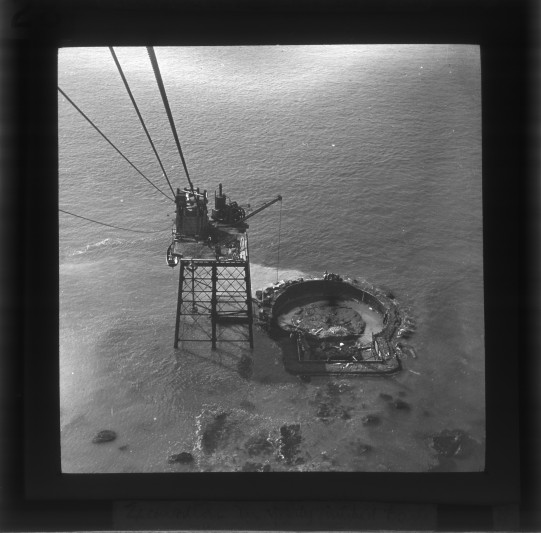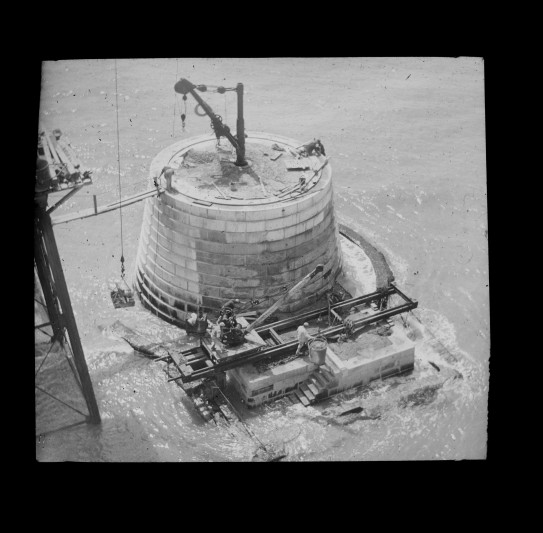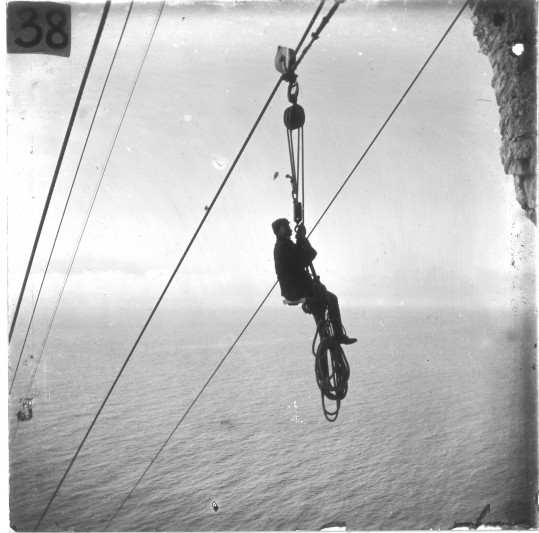The collection contains 71 lantern slides showing the construction of the lighthouse, from the building of a coffer-dam to retain the sea to the lighthouse-keeper relaxing in his new quarters. The name of the photographer is not known, but it was probably the designer and builder Sir Thomas Matthews (1849-1930). Matthews was born in Penzance, the son of the Borough Surveyor. From 1868 to 1871 he assisted his father in providing drinking water for Penzance and in constructing the sea and harbour defences. For the following two years he practised as an architect and surveyor in Penzance, and in 1874 entered the employment of the United Kingdom's lighthouse service, Trinity House, as an assistant engineer; he succeeded to the office of Engineer-in-Chief in 1892.
Matthews went on to design over a dozen lighthouses for Trinity House. He also worked on illumination systems, notably a lamp designed to burn oil vapour. His most significant achievement was the construction of Beachy Head Lighthouse. Completed in 1902, it was the last rock lighthouse built by Trinity House. The work took two years to finish and involved building a coffer-dam and an aerial ropeway from the cliffs to transport materials, both of which are illustrated by these slides. The Cornish origins of Matthews might account for their being sold in an auction house in his home town.
Beachy Head is an iconic feature of the landscape of East Sussex, and a crucial element of its maritime heritage. The site of a naval engagement in 1690 and celebrated by Eric Ravilious (1903-1942) in a watercolour of 1939, it also provides an element of the frieze which decorates the external faces of The Keep, home of East Sussex Record Office. This large collection of lantern slides, minutely recording the construction of the lighthouse, is an important acquisition, a unique illustration of maritime East Sussex and what is arguably its most iconic landscape feature. We already hold an album from the library of Sir Thomas Matthews containing 29 photographs similar to those on the lantern slides (ACC 12853/7/9). But the prints are faded and not as sharp as those depicted in the slides. The lantern slides greatly complement the photographs.
East Sussex Record Office has large holdings of glass negatives and lantern slides, and is already running a project using volunteers to scan large quantities of such material acquired earlier in 2017. The images will be accessible to the public in our reference room and can be projected onto the building using an external projector. In time we plan to make scanned images available on our website, improving accessibility to the general public.



